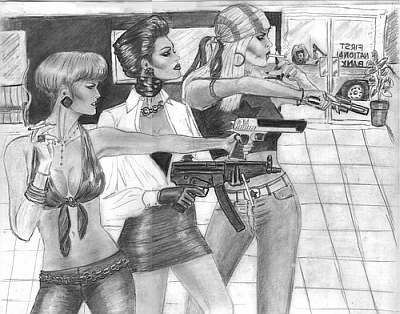I have become aware of an odd Japanese sub-culture of sexy action heroines, which might be best described as Power Rangers for mature viewers. While it seems they contain rather too much bondage and torture for me to be entirely happy with them, they are certainly within the remit of the site. Here’s a sample clip from Gravure Heroine Gaia Ranger, produced by Zen Pictures, who appear to be the market leaders in such things. Some of them appear to have received distribution in the West, so might follow up there. Obviously, this is the kind of thing where you need subtitles, to follow what’s going on…
Month: March 2010
Female Terrorists
 Earlier this month, the Washington Post reported that “A petite, blond-haired, blue-eyed high school dropout who allegedly used the nickname Jihad Jane was identified Tuesday as an alleged terrorist intent on recruiting others to her cause… LaRose, who lived in suburban Philadelphia, allegedly recruited men and women in the United States, Europe and South Asia to “wage violent jihad,” according to an indictment issued in Pennsylvania.” It’s the latest example of an area in which I find myself treading particularly carefully on this site: female terrorists.
Earlier this month, the Washington Post reported that “A petite, blond-haired, blue-eyed high school dropout who allegedly used the nickname Jihad Jane was identified Tuesday as an alleged terrorist intent on recruiting others to her cause… LaRose, who lived in suburban Philadelphia, allegedly recruited men and women in the United States, Europe and South Asia to “wage violent jihad,” according to an indictment issued in Pennsylvania.” It’s the latest example of an area in which I find myself treading particularly carefully on this site: female terrorists.
I don’t want anyone to think that I advocate, in any way, “real” violence; long-time readers will know of the issues even the perception of such has caused in the past, and I dread to think how many alarms went off in Homeland Security with the Googling required for this piece! But there is still something transgressively – if not appealing, let’s go with “intriguing” – about the concept of a woman resorting to violence for political or social reasons. It seems such a contradiction, for the supposedly-gentler sex, the one which nurtures life, to use such means, that it demands further investigation. Of course, the word “terrorist” is more than somewhat laden with underlying meaning. In reality, the line between “terrorist” and “freedom fighter” is one largely determined by whether or not you support the regime under attack, and the historical record tends to be written by the winners in such struggles. I draw no such lines here: I am more interested in the people in question than the causes they espouse.
What follows is a selection of some of the interesting characters from history, starting more than 130 years ago, and going almost to the present day. I have deliberately excluded suicide bombers from the list, even though these have played an important part in history – for instance, it was a female Tamil Tiger who killed former Indian prime minister Rajiv Gandhi in 1991. It just doesn’t seem as interesting to me, to blow yourself up for a cause, when compared to a longer-term commitment to it. I have also excluded some obvious names: Palestinian Leila Khaled, because she has been covered before on the site – and will be covered again in the future, since her autobiography is on my reading list – and also Patty Hearst, since it seems questionable whether she was truly acting of her own volition.

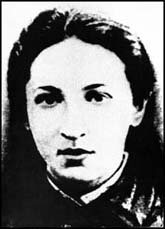 1. In the late 19th century, a number of women were among the active leaders of the Russian nihilist organization Narodnaya Volya (People’s Will), best known for their assassination of Czar Alexander II in 1981. That was organized by a woman, Sophia Perovskaya, with another female member of the Executive Committee, Vera Figner (left) also participating. Four years previously, Vera Zasulich (right) shot and seriously wounded Colonel Theodore Trepov, the hated governor of St. Petersburg.
1. In the late 19th century, a number of women were among the active leaders of the Russian nihilist organization Narodnaya Volya (People’s Will), best known for their assassination of Czar Alexander II in 1981. That was organized by a woman, Sophia Perovskaya, with another female member of the Executive Committee, Vera Figner (left) also participating. Four years previously, Vera Zasulich (right) shot and seriously wounded Colonel Theodore Trepov, the hated governor of St. Petersburg.
2. Daughter of an English baronet, and married to a Polish count, Constance Markiewicz was an unlikely revolutionary. But her political commitment, to causes including women’s suffrage and Irish independence, was deep. She was a Lieutenant in the Irish Citizen’s Army and during the 1916 Easter Rising, Markiewicz was appointed second in command at St Stephen’s Green in Dublin She supervised the setting-up of barricades, and was in the middle of the fighting, wounding a British army sniper. After being released from prison, she became rhe first woman elected to the British Parliament, though did not take her seat.
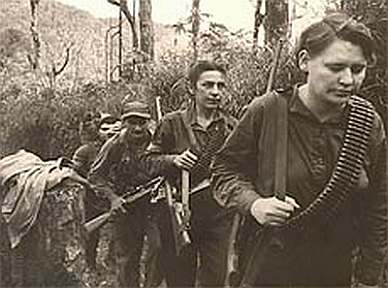 3. In Cuba, Celia Sánchez (right, with fellow revolutionary Haydée Santamaría) became one of the earliest members of the 26th of July Movement, joining the struggle after the coup against President Batista in 1952. After Fidel Castro was jailed, she became the rebel leader in the mountainous Sierra region of eastern Cuba, and was called by Castro, “the greatest guerrilla fighter and the most outstanding leader of the Cuban Revolution.” was one of the first women to assemble a combat squad during the revolution[. She was tasked with making all the necessary arrangements throughout the southwest coast region of Cuba, for the Granma landing, and was responsible for organising reinforcements once the revolutionaries landed.
3. In Cuba, Celia Sánchez (right, with fellow revolutionary Haydée Santamaría) became one of the earliest members of the 26th of July Movement, joining the struggle after the coup against President Batista in 1952. After Fidel Castro was jailed, she became the rebel leader in the mountainous Sierra region of eastern Cuba, and was called by Castro, “the greatest guerrilla fighter and the most outstanding leader of the Cuban Revolution.” was one of the first women to assemble a combat squad during the revolution[. She was tasked with making all the necessary arrangements throughout the southwest coast region of Cuba, for the Granma landing, and was responsible for organising reinforcements once the revolutionaries landed.
4. Considered a key figure in the Algerian struggle for independence from France, Hassiba Ben Bouali joined the FLN (National Liberation Front) while studying at the university in Algiers, and became the liaison officer of Ali La Pointe, deputy chief of FLN military operations for the city. She was active in the manufacture and transport of bombs around the city, as part of a campaign now known as the Battle of Algiers, which began on September 30, 1956 when Bouali and two other female FLNmilitants, carried out a series of bomb attacks on civilian locations. She was killed the following year when French forces bombed their hideout.
5. Tibetan Buddhist nun Ani Pachen fled to a monastery at age 17, after overhearing plans to marry her off, but returned in 1958 after her father died, inhering leadership of her clan. She led a guerrilla campaign, overseeing 600 fighters on horseback against the Chinese occupying forces and their tanks, which only ended with her capture in late 1959. She then spent the next 21 years in prison, and after her release in 1981, continued to protest against the Chinese occupation, until forced in exile in India. She said in a 2000 interview, “My father taught me to ride and to shoot. I used to race horses when I was a teenager. They didn’t have separate races for girls. I raced my horse against men.”
 6. Fusako Shigenobu (left, with colleague Kozo Okamoto) was one of the founders and leaders of the Japanese Red Army. She is now serving 20 years for kidnapping embassy workers during a 1974 Japanese Red Army operation, she is also believed to have played key roles in other hijackings and bomb attacks. Reputedly ordered the murder, by burial alive, of a pregnant woman colleague for being “too bourgeois.” Another left-wing radical, Hiroko Nagata, while acting as vice-chairman of the United Red Army, directed the killing of 14 members of the group by beatings or hypothermia, during a 1972 purge. With friends like that, who needs enemies?
6. Fusako Shigenobu (left, with colleague Kozo Okamoto) was one of the founders and leaders of the Japanese Red Army. She is now serving 20 years for kidnapping embassy workers during a 1974 Japanese Red Army operation, she is also believed to have played key roles in other hijackings and bomb attacks. Reputedly ordered the murder, by burial alive, of a pregnant woman colleague for being “too bourgeois.” Another left-wing radical, Hiroko Nagata, while acting as vice-chairman of the United Red Army, directed the killing of 14 members of the group by beatings or hypothermia, during a 1972 purge. With friends like that, who needs enemies?
7. At only 22, Dora María Téllez was third in command for a 1978 operation which seized control of the Nicaraguan National Palace in Managua, taking the entire congress hostage and helping trigger the fall of the Somoza regime. The following year, Sandinista units under her control fought Somozan forces for six straight weeks, before finally capturing Leon, the second-largest city in Nicaragua. Subsequently became a respected historian, but as recently as 2004, was still barred from the United States as a terrotist.
8. Donna Maguire, once called Europe’s most dangerous woman, travelled to Europe in 1989 as part of an IRA active service unit, an is suspected by authorities of a bombing at a British Army barracks at Osnabruck on 19 June, the killing of a British soldier in a car bomb attack several days later, as well as the murders of two Australian tourists mistaken for off-duty soldiers, and a British soldier in Dortmund. Was eventually found guilty of attempted murder, explosives offences and spying on British Army bases in Germany with intent to sabotage. Sentenced to nine years, she was released immediately due to time spent in prison on remand. A family friend said of her: “She was an ordinary girl on the surface, but underneath she was as hard as nails.”
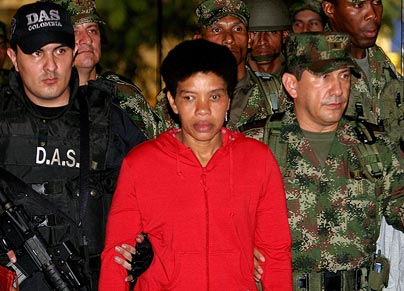 9. During their struggle for independence from Spain, Basque separatist group ETA had some infamous women members. These include Maria Dolores Gonzalez (“Yoyez”), who was later assassinated by the group as a reprisal for having left. Also high in their power structure was María Soledad Iparragirre, known as ‘Anboto’, whose exploits allegedly included the murder of a Spanish army Lieutenant and a car bomb explosion against a military bus, that killed seven.
9. During their struggle for independence from Spain, Basque separatist group ETA had some infamous women members. These include Maria Dolores Gonzalez (“Yoyez”), who was later assassinated by the group as a reprisal for having left. Also high in their power structure was María Soledad Iparragirre, known as ‘Anboto’, whose exploits allegedly included the murder of a Spanish army Lieutenant and a car bomb explosion against a military bus, that killed seven.
10. Nelly Avila Moreno, known as ‘Karina’, surrendered to Colombian authorities in 2008 (right), after a long career as a legend in the Revolutionary Armed Forces of Colombia (FARC). One army intelligence source said, “To become a FARC leader you have to been utterly ruthless and vicious, even more so if you are a woman. Karina was both.” As a result of her battles, she was blind in one eye, lost a breast, had bullet wounds along an arm and had combat scars on her face. The 45-year old was in charge of FARC’s 47th Front, which had up to 350 members operating in the northern province of Antioquia. Sentenced to 33 years in jail, she was released in 2009 to serve as a “promoter of peace.”
- The Baader-Meinhof Complex
★★★
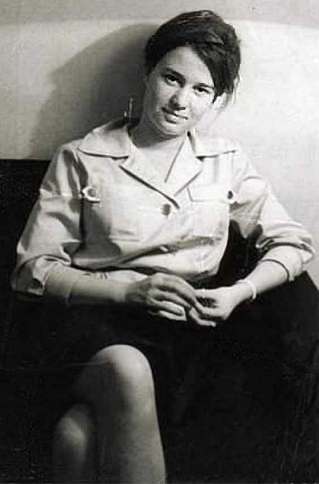
Director Edel is probably best known in the West for the embarrassing Body of Evidence, though would rather be remembered for the much better, if incredibly depressing, Last Exit to Brooklyn. This is certainly nearer to the latter, depicting the rise and fall of the Baader-Meinhof group, also known as the Red Army Faction, the terrorist gang whose actions sent Germany into a state of nervous anxiety in the late 70’s. They started off at the end of the sixties, when Europe was in a state of political flux, but became more radical, engaging in bank robberies to fund their activities and then escalating to bombings, assassinations and kidnappings. The leaders were eventually caught – and I trust this isn’t much of a spoiler – dying mysterious deaths in jail, officially called suicide, but suspected by some as being extra-judicial execution.
It’s a generally interesting, but also flawed, approach to the subject matter, because it tries too hard to be even-handed, both humanizing the group, while also being sympathetic to the establishment they sought to bring down. It’s hard to do this, while still generating much emotion, because the viewer is left not really knowing for whom they should “root”. In addition, former journalist Ulrike Meinhof (Gedeck – the picture, above, is the real Meinhof) is initially the focus of the movie’s attention, but the way things unfold (and I’m manfully avoiding any spoilers there) mean that things inevitably have to shift away from her in the latter stages. The movie also faces the inevitable problem of any film based on actual events: reality rarely, if ever, follows a three-act structure, and as a result, either the facts or the drama have to suffer – here, it seems to be the drama, with the story not so much building to a climax as petering out.
That said, the performances are good, particularly Wokalek as Gudrun Ensslin, who has been described as the intellectual head of the RAF. What makes it suitable for inclusion here is the way that both Meinhof and Ennslin are depicted as the driving forces, the engine-room of the Red Army Faction. Andreas Baader (Bleibtreu – who was also the ineffectual boyfriend in Run Lola Run) is depicted as a hot-head, and something of a hypocrite, with a taste for fast cars. It’s clear that Ensslin and Meinhof are the ones that run the group – Baader was, in fact, a high-school dropout and one of the few RAF members who did not attend university. I have vague memories of hearing reports about the group as I grew up; while it was good to have the large blanks in my knowledge filled in, this felt more like a Discovery Channel re-enactment of the RAF’s history, rather than offering anything truly cinematic.
Dir: Uli Edel
Continue reading →
Star: Martina Gedeck, Moritz Bleibtreu, Johanna Wokalek, Nadja Uhl
Contract Killers
★★
“If they come out with the pilot episode, I wouldn’t mind seeing it, but otherwise, I don’t think I’ll tune in next week.”
 This feels more like a mid-season episode of Alias than anything else, and not much more than a filler episode at that. I say this, because so little effort is put into developing the characters, it’s as if the makers reckon everything had already been established in the previous seven installments. And since there are no such episodes, this leads to a very low level of interest in the proceedings as they unfold. It centers on “Jane” (Farrell), a CIA killer who finds herself on the receiving end of a burn notice, and forced on the run, as she tries to find out why she’s been targetted for elimination by her boss. This takes her Trinidad, where she finds an unlikely partner in the vacationing Lars (Willis), and hunted by another hired hitman, Pernell (Giles, for whom we have a soft spot, from his days working with infamous B-movie mayhem merchants, The Asylum).
This feels more like a mid-season episode of Alias than anything else, and not much more than a filler episode at that. I say this, because so little effort is put into developing the characters, it’s as if the makers reckon everything had already been established in the previous seven installments. And since there are no such episodes, this leads to a very low level of interest in the proceedings as they unfold. It centers on “Jane” (Farrell), a CIA killer who finds herself on the receiving end of a burn notice, and forced on the run, as she tries to find out why she’s been targetted for elimination by her boss. This takes her Trinidad, where she finds an unlikely partner in the vacationing Lars (Willis), and hunted by another hired hitman, Pernell (Giles, for whom we have a soft spot, from his days working with infamous B-movie mayhem merchants, The Asylum).
Technically, it’s competent enough. If nothing too stunning, the action is fairly frequent and reasonably well-filmed, and Farrell does bring a certain hard-edged competence to her character. The main problem is that the script gave me absolutely no reason to care about her, or anyone else who taking part. The only element of backstory provided for Jane, is 30 seconds of exposition thrown away somewhere in the middle; it doesn’t result from anything, tie into anything, lead into anything and is ignored for the rest of the movie. It wouldn’t necessarily have taken a great deal of effort; I’m not demanding her entire lifestory, just some quirks to suggest there was actually a human being present, not simply an asset being pushed from scene to scene by the director. Almost exactly the same problem affects the other characters: no depth, no humanity, no purpose.
On the positive side, there’s some nice use of locations, and a certain sense of paranoia, even if that might be because the central purpose of the bad guys (it involves a software program they’re going to use to attack the financial markets) is never entirely clear. Or maybe I’d given up paying attention by this point, the movie having finally lost its battle for my attention. Maybe it could be rescued with 15 minutes of “Previously, on Contract Killers…” at the start. Wouldn’t bet on it though.
Dir: Justin Rhodes
Stars: Frida Farrell, Christian Willis, Rhett Giles, Nick Mancuso
The Baader-Meinhof Complex
★★★

Director Edel is probably best known in the West for the embarrassing Body of Evidence, though would rather be remembered for the much better, if incredibly depressing, Last Exit to Brooklyn. This is certainly nearer to the latter, depicting the rise and fall of the Baader-Meinhof group, also known as the Red Army Faction, the terrorist gang whose actions sent Germany into a state of nervous anxiety in the late 70’s. They started off at the end of the sixties, when Europe was in a state of political flux, but became more radical, engaging in bank robberies to fund their activities and then escalating to bombings, assassinations and kidnappings. The leaders were eventually caught – and I trust this isn’t much of a spoiler – dying mysterious deaths in jail, officially called suicide, but suspected by some as being extra-judicial execution.
It’s a generally interesting, but also flawed, approach to the subject matter, because it tries too hard to be even-handed, both humanizing the group, while also being sympathetic to the establishment they sought to bring down. It’s hard to do this, while still generating much emotion, because the viewer is left not really knowing for whom they should “root”. In addition, former journalist Ulrike Meinhof (Gedeck – the picture, above, is the real Meinhof) is initially the focus of the movie’s attention, but the way things unfold (and I’m manfully avoiding any spoilers there) mean that things inevitably have to shift away from her in the latter stages. The movie also faces the inevitable problem of any film based on actual events: reality rarely, if ever, follows a three-act structure, and as a result, either the facts or the drama have to suffer – here, it seems to be the drama, with the story not so much building to a climax as petering out.
That said, the performances are good, particularly Wokalek as Gudrun Ensslin, who has been described as the intellectual head of the RAF. What makes it suitable for inclusion here is the way that both Meinhof and Ennslin are depicted as the driving forces, the engine-room of the Red Army Faction. Andreas Baader (Bleibtreu – who was also the ineffectual boyfriend in Run Lola Run) is depicted as a hot-head, and something of a hypocrite, with a taste for fast cars. It’s clear that Ensslin and Meinhof are the ones that run the group – Baader was, in fact, a high-school dropout and one of the few RAF members who did not attend university. I have vague memories of hearing reports about the group as I grew up; while it was good to have the large blanks in my knowledge filled in, this felt more like a Discovery Channel re-enactment of the RAF’s history, rather than offering anything truly cinematic.
Dir: Uli Edel
Star: Martina Gedeck, Moritz Bleibtreu, Johanna Wokalek, Nadja Uhl
Cops and Robbers, by Thad Brown
[What follows below is the opening of one of the stories in The Smoking Gun Sisterhood, a collection by Thad Brown. Our review of the book can be found here.]
“Are we really, really sure we want to do this?” Brittany’s soft-voiced question hung in the air for a moment, as Lizzie thought seriously about it herself, realizing that it might be the most momentous question she’d ever decided in her twenty-four years. She shifted her tall, lithely-built body on the car’s back seat as she looked over at the speaker beside her. A year older than Lizzie, Brittany as usual affected more attempt at elegance in her dress than her friend did with a plain T-shirt and jeans; the black-haired young woman wore a partly buttoned white blouse over her low-cut tube top, with an imitation silk scarf and a chain necklace which, if not expensive, was at least gaudy. (Granted, her black mini-skirt was no longer in the height of fashion –but then, shopping at thrift stores and yard sales wasn’t exactly like buying clothes at Nieman Marcus.)
But for once, the older girl’s face didn’t wear the usual arrogant expression that caused many people to dismiss her as “stuck-up,” and with which she usually faced a world that, as she put it, hadn’t ever done much but crap on her. Behind her, through the glass, Lizzie could see the low brick building at which they’d just pulled up, and, in the distance beyond, the snow-capped peaks of the Rockies that circled their city. On the building’s door glass the letters read “FIRST NATIONAL BANK.” Resting on the car floor between Brittany’s legs, the Heckler and Koch MP5 submachine gun her dad had brought back from the first Gulf War, and which she’d lifted from her parent’s attic, wasn’t visible from the sidewalk.
Riding shotgun in the front, twenty-one-year-old Shelley, Lizzie’s other close friend from their public housing building, was finishing the cigarette she’d obviously lit to steady her nerves, smoking it in deep drags and exhaling in the quick breaths of a person tightly griped by tension. Her chest was bare except for a low-cut tube top that went well with her thick, short-cut coppery-red hair. (Brittany had protested the younger woman’s scanty attire: “Jeez, girl, we don’t want to attract attention! You’re going to stick up a bank, not do a pole dance down where you work!”
But, as Shel had pointed out, she didn’t even own any clothes that weren’t revealing, except her winter stuff –and wouldn’t a parka attract more attention, in mid-summer?) Like Brittany’s, her face, its sharp, rather angular features hardened by more troubles than many people saw in twice her years, was expectantly turned to Lizzie, who knew that though she wasn’t the oldest of their trio, she was the one the others looked to as a leader –especially now, in this scheme that had been hatched in one of their late-night gripe sessions around her kitchen table. The weight of the responsibility knotted her guts, along with nagging guilt and roiling fear.
She took a deep breath, and spoke slowly. “I’m sure of what this money can mean, to me –to every one of us. And I’m sure that we’ve planned this just as well as is humanly possible –we’ve been talking about it for two months, and casing the place for three weeks. This is the perfect time to hit it; there won’t be many people inside. We’ll go in with our guns out, take charge of the situation from the get-go, and be in and out before anybody gets hurt. That guard’s not even going to try to draw, not with three guns already pointed at him; he’s not nuts.” The assurance in her voice belied her own nagging doubts on that score; she’d lain awake half of last night wondering what would happen if he did, or if one of the bank’s customers turned out to be packing heat.
Both she and Shel had taken their weapons out to a box canyon in the mountains near the city several times, and practiced shooting at rocks and pine cones until they could pretty well hit what they aimed at. (Brittany hadn’t; but as she said, if she couldn’t hit a mark with a machine gun, practice wouldn’t help her.) If that happened, she believed that she could handle the emergency, and hopefully just wound rather than, God forbid, kill, or be killed …but there was always that chance. Swallowing hard, she continued. “I’m sure that I’m not going to get cold feet now, we’ve all put too much hope into this for that.”
Turning her head slightly, she faced the car’s owner and driver. About Lizzie’s age, Jackie Fitch was blonde as well, though her hair color came from a bottle while Lizzie’s was natural. Not part of their tight-knit threesome, to Lizzie’s mind Jackie was the weakest link in this plan; but back in their teens, she was the only girl who’d joined the boys from the projects sometimes when they’d blocked off the street outside and drag raced their cars –and whenever Jackie’d raced, she’d won. An oversize pair of imitation dice hanging from her front-seat mirror symbolized her luck; they might need all of it today. “Keep that engine running,” Lizzie addressed her, “and when we get back here you take out like a bat out of hell. Just don’t run into anybody while you’re doing it.”
Jackie snorted, her eyes inscrutable behind dark glasses. “Any fool who can’t keep from hitting people at ninety miles an hour hasn’t got any business doing ninety.” A mirthless smile flickered briefly on her tough features. “Don’t worry about my driving, girlfriend; just see to it that I get my six hundred bucks.” They’d each promised to pony up two hundred for her from whatever their shares of the take amounted to.
“You’ll get it.” Not owning a watch, Lizzie looked at the bank’s outdoor clock. At noon, the bank’s manager would walk out from the shelter of his office into the main room, with his vault keys on him, ready to leave for his lunch. “Get ready,” she told her partners. Undoing the striped bandanna that held back the glorious mane of her more than shoulder-length hair, she shook her tresses out of her green eyes, folded the cloth into a triangle, and tied it point down over her nose and mouth.
Brittany and Shel followed suit, the former with her scarf and the latter with a good-sized handkerchief from the back pocket of her leather pants. Shel, Lizzie knew, had the .50 caliber Desert Eagle from her dad’s drawer. Her hand shaking slightly, she reached into her purse for her own weapon, an unregistered .44 revolver she’d bought cheap years ago out of the back of somebody’s truck, for personal protection. She’d drawn it once, to face down a would-be mugger; but she’d never imagined then that she’d ever be drawing it for a reason like this. With her other hand, she lifted three gunny sacks from the car floor.
The bank’s clock registered noon…





